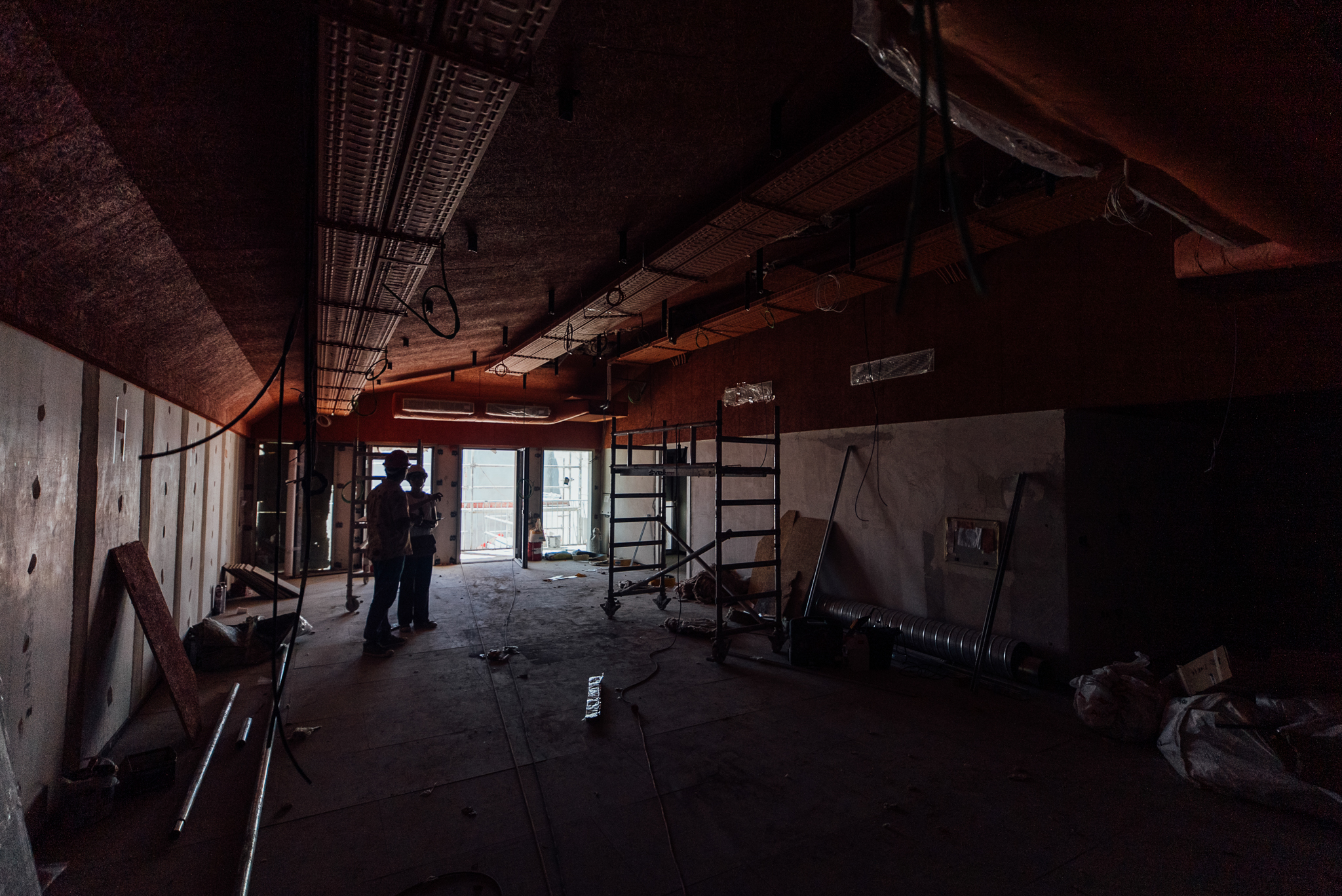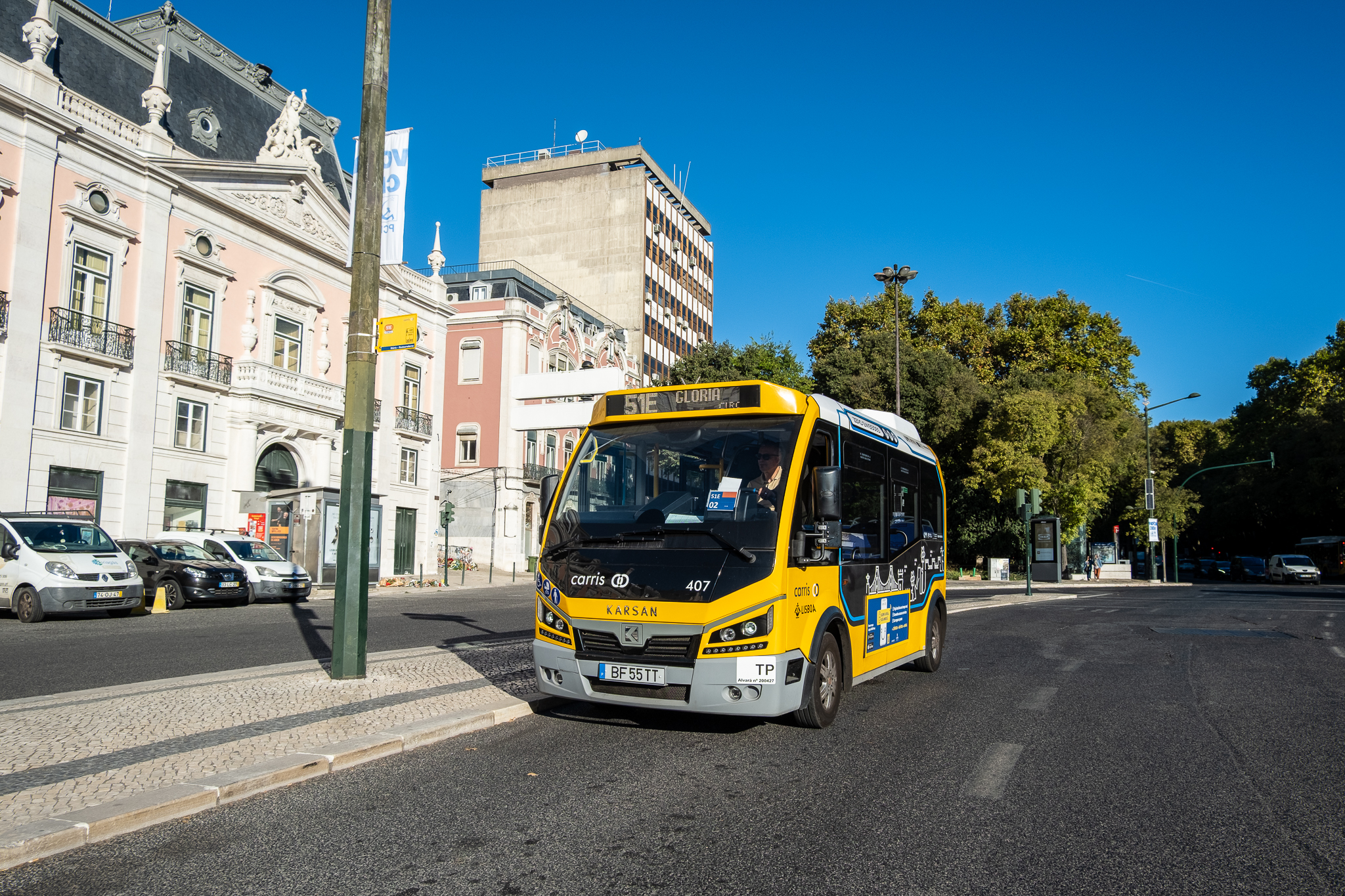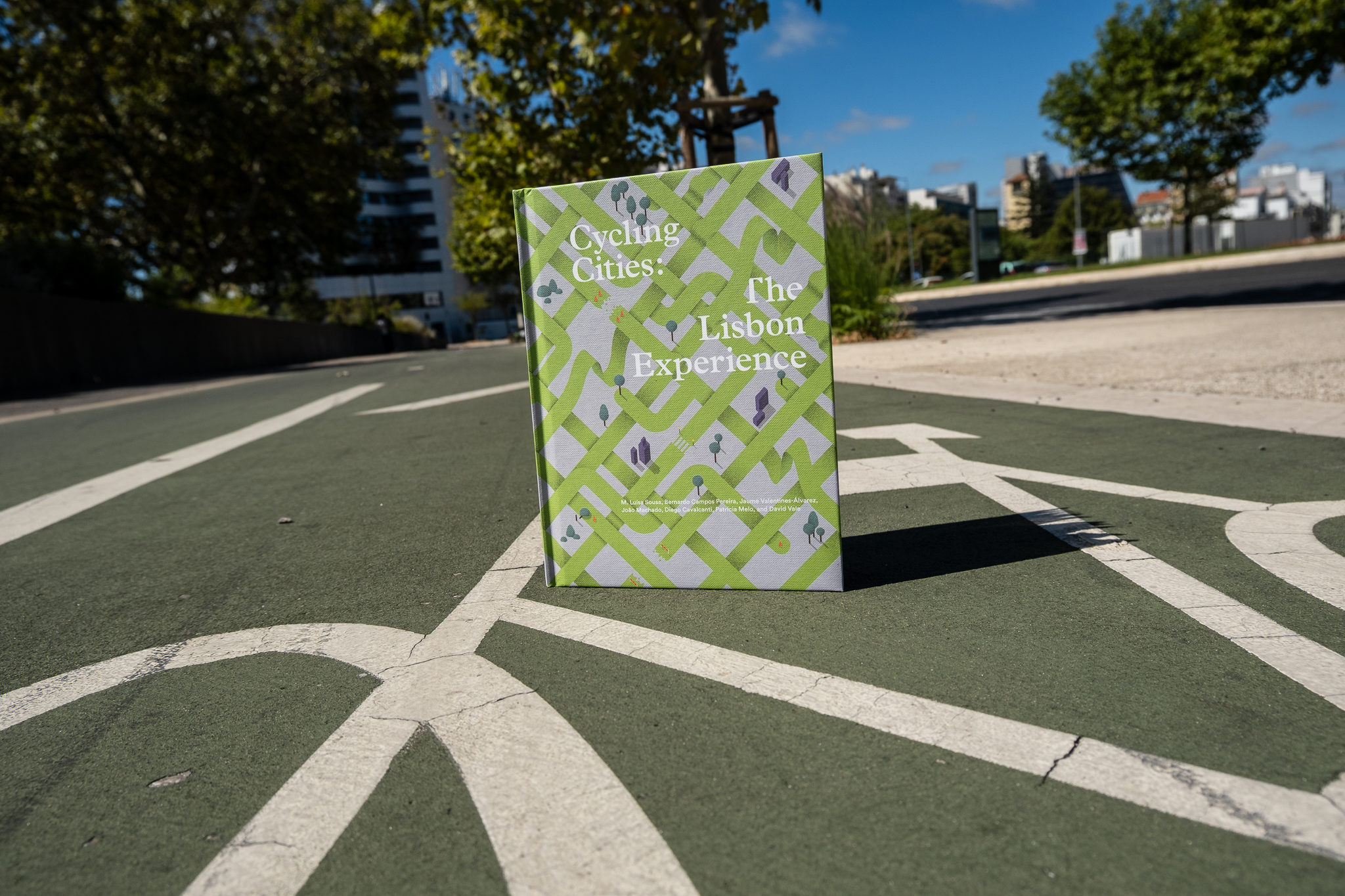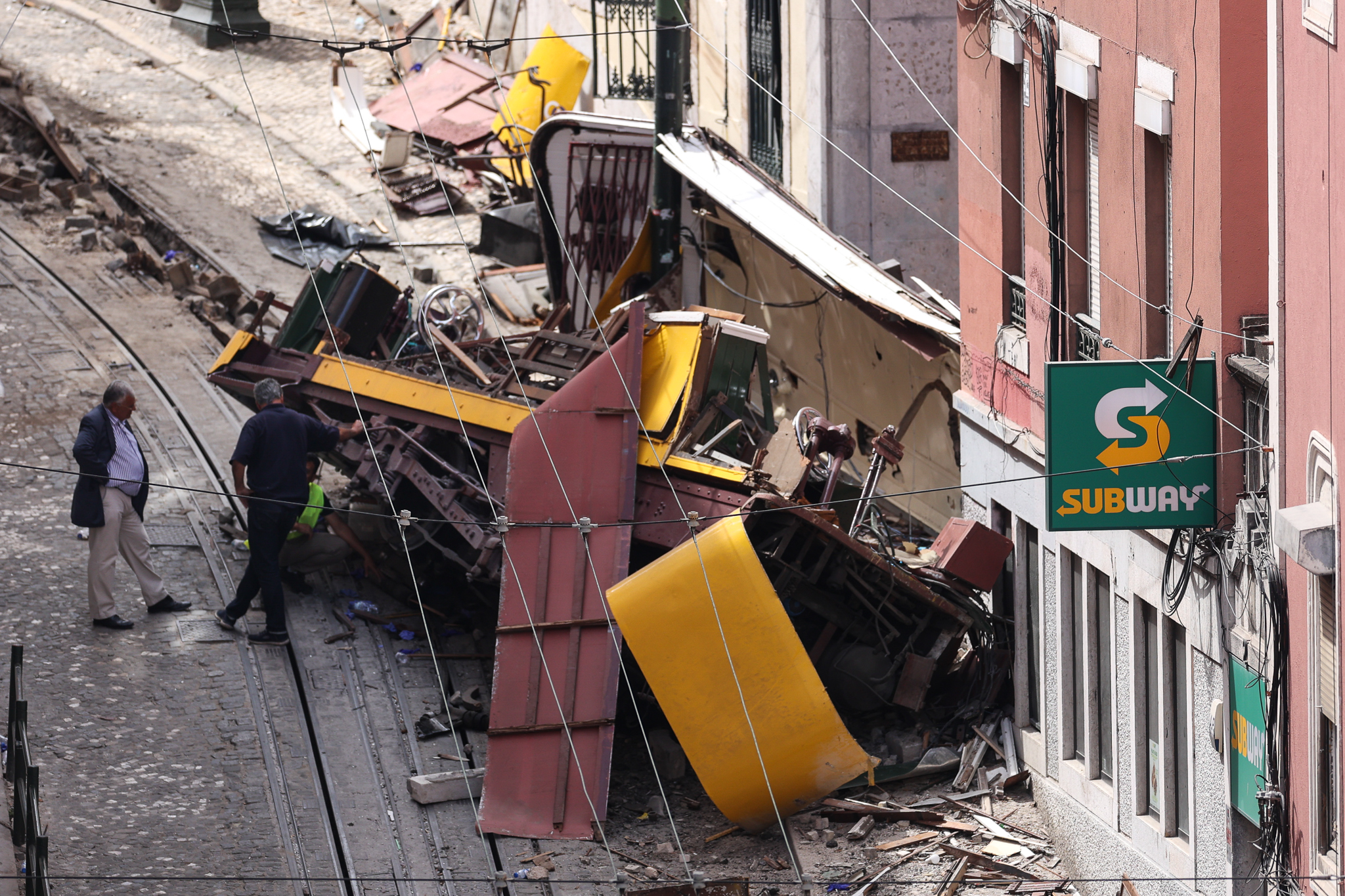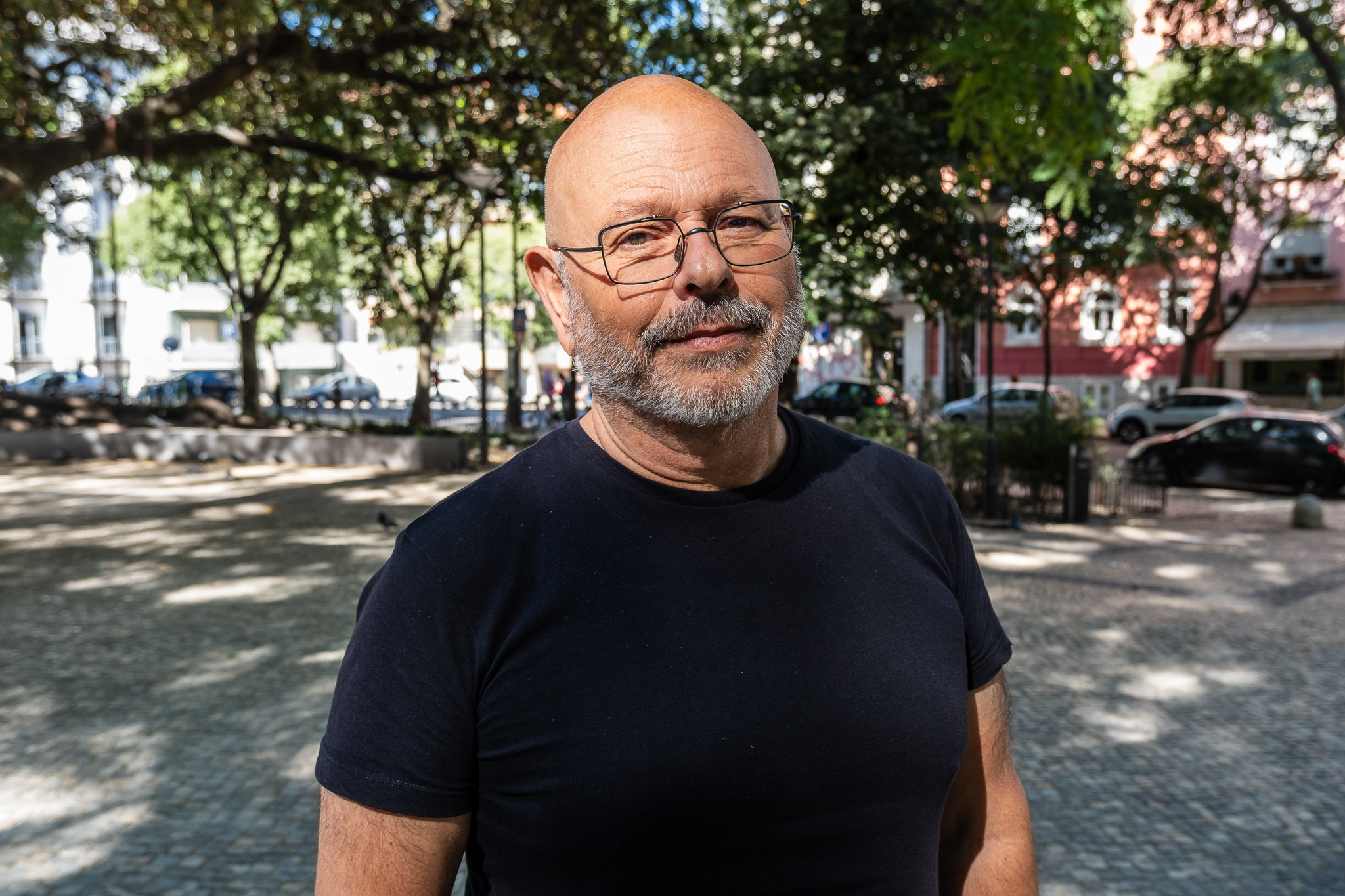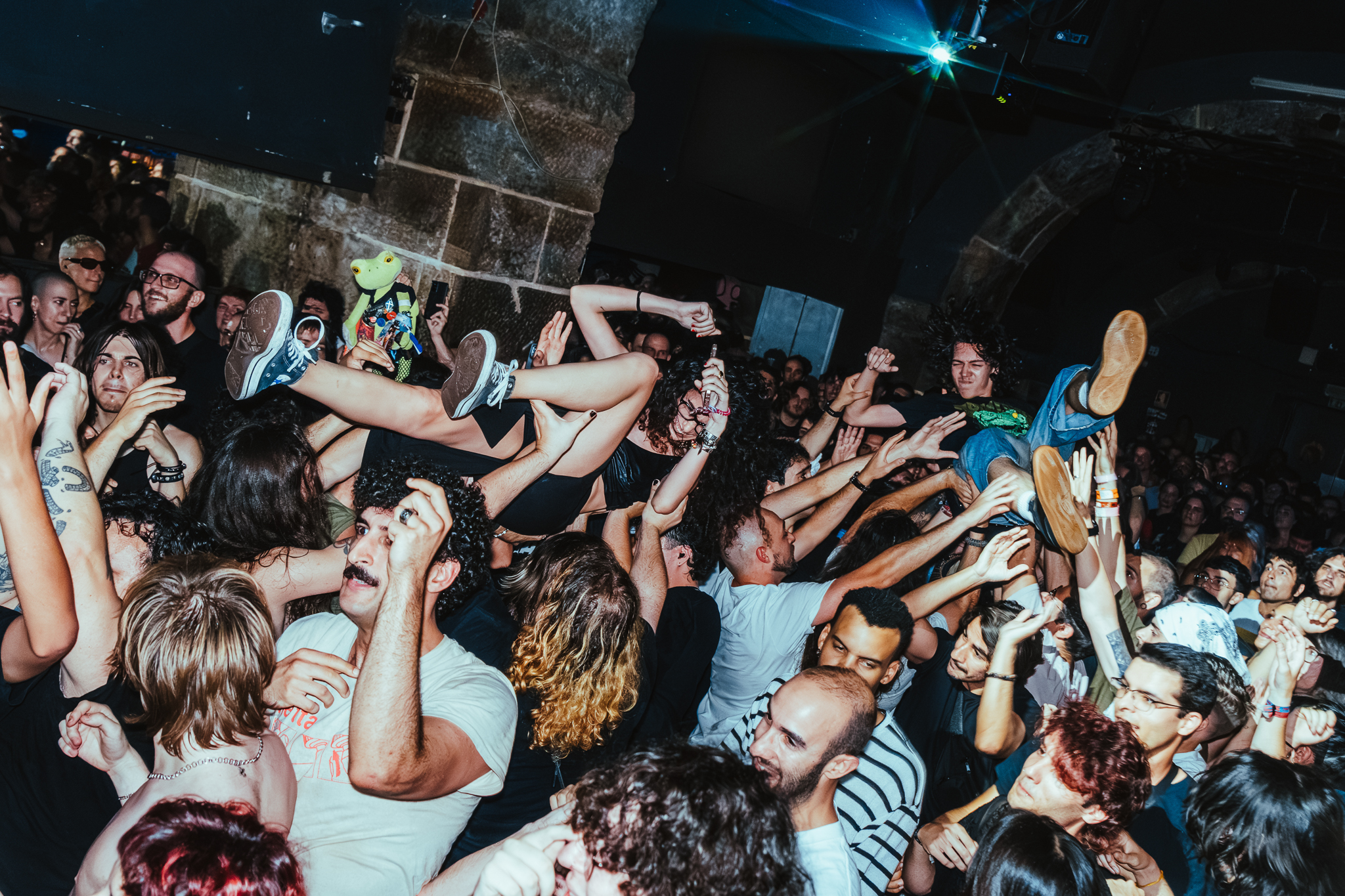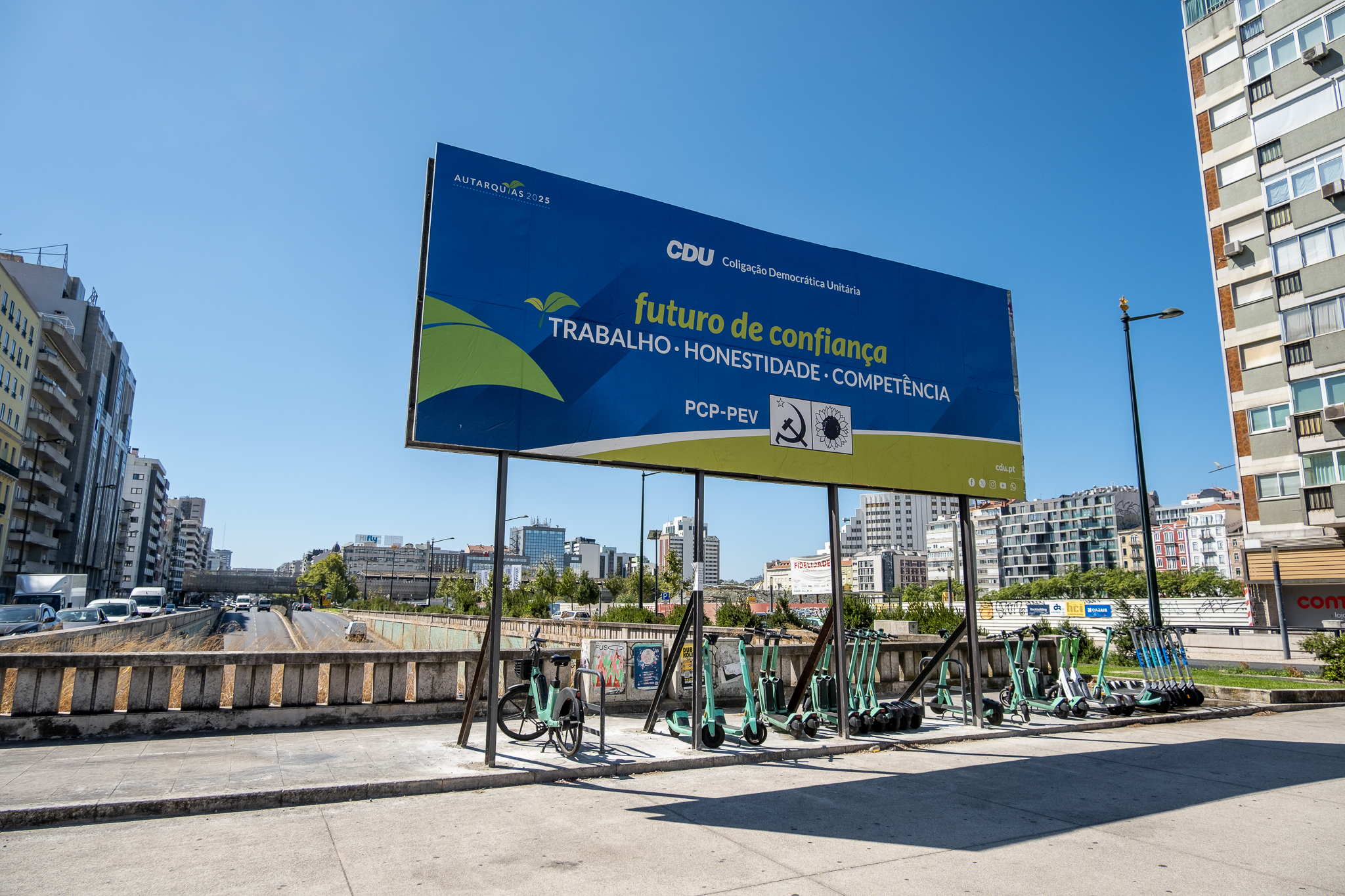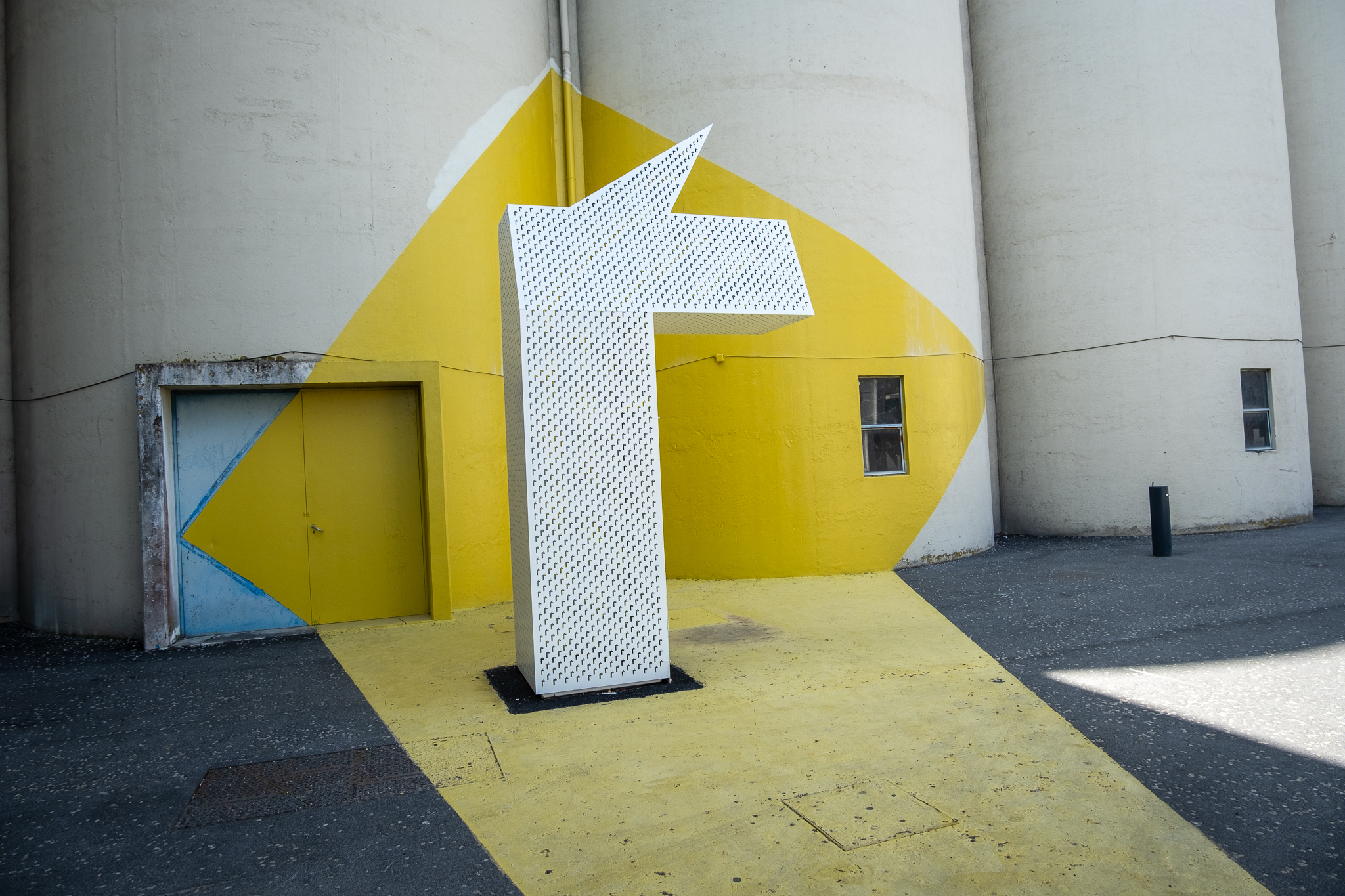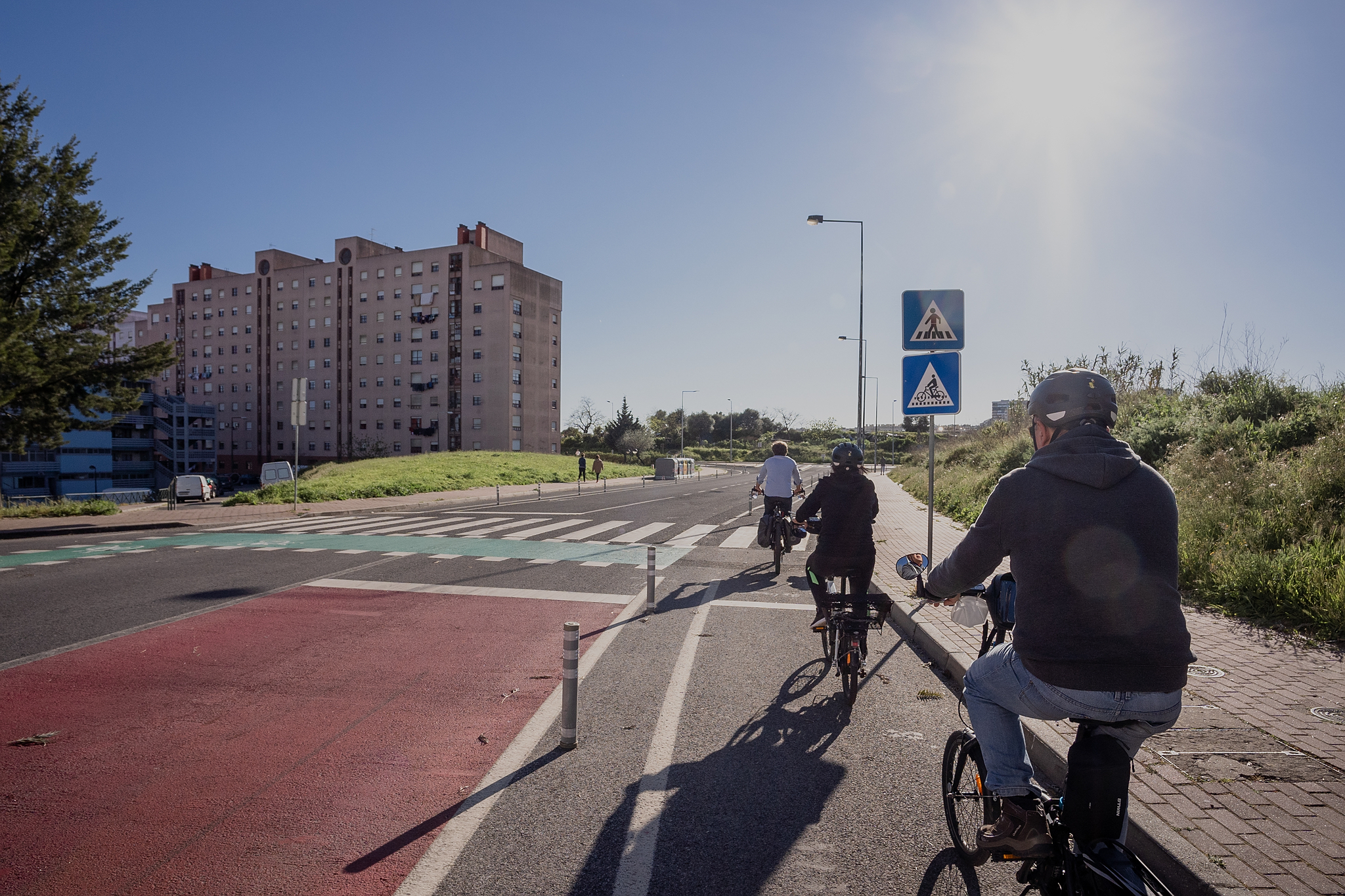
The Avenida da República bike path has shown that Lisbon can be a cyclable city. Since its completion in early 2017, bike use in the city hasn't stopped growing - the GIRA shared system has given it a push and so has the construction of quality infrastructure around the city. The plan is to reach 200 bikeable kilometers (or close to it) later this year, between segregated bike lanes connecting the different neighborhoods, and non-segregated channels within each neighborhood.
At a time when several construction works for new bike lanes are underway in various parts of the city and others will follow, we went to try to understand the plan and the vision of the municipality for the future of the city's mobility and how the bicycle fits into this framework.
Why Cycle Paths in Lisbon? The complete picture
After consecutive years of investment in automobile infrastructure, Lisbon, like other capitals, has run into the effects: congestion, pollution, and road insecurity. The Lisbon Municipality wants to reverse this situation and, by 2030, reduce urban travel by car from 47% to 34% - a reduction of 28% - and put what it groups under "green mobility", which includes walking, cycling and public transport, at 66%. The municipality does not outline a specific target for cycling but knows that in 2017 this represented a modal share of only 0.6%, still representing growth of about 200% compared to 2011.
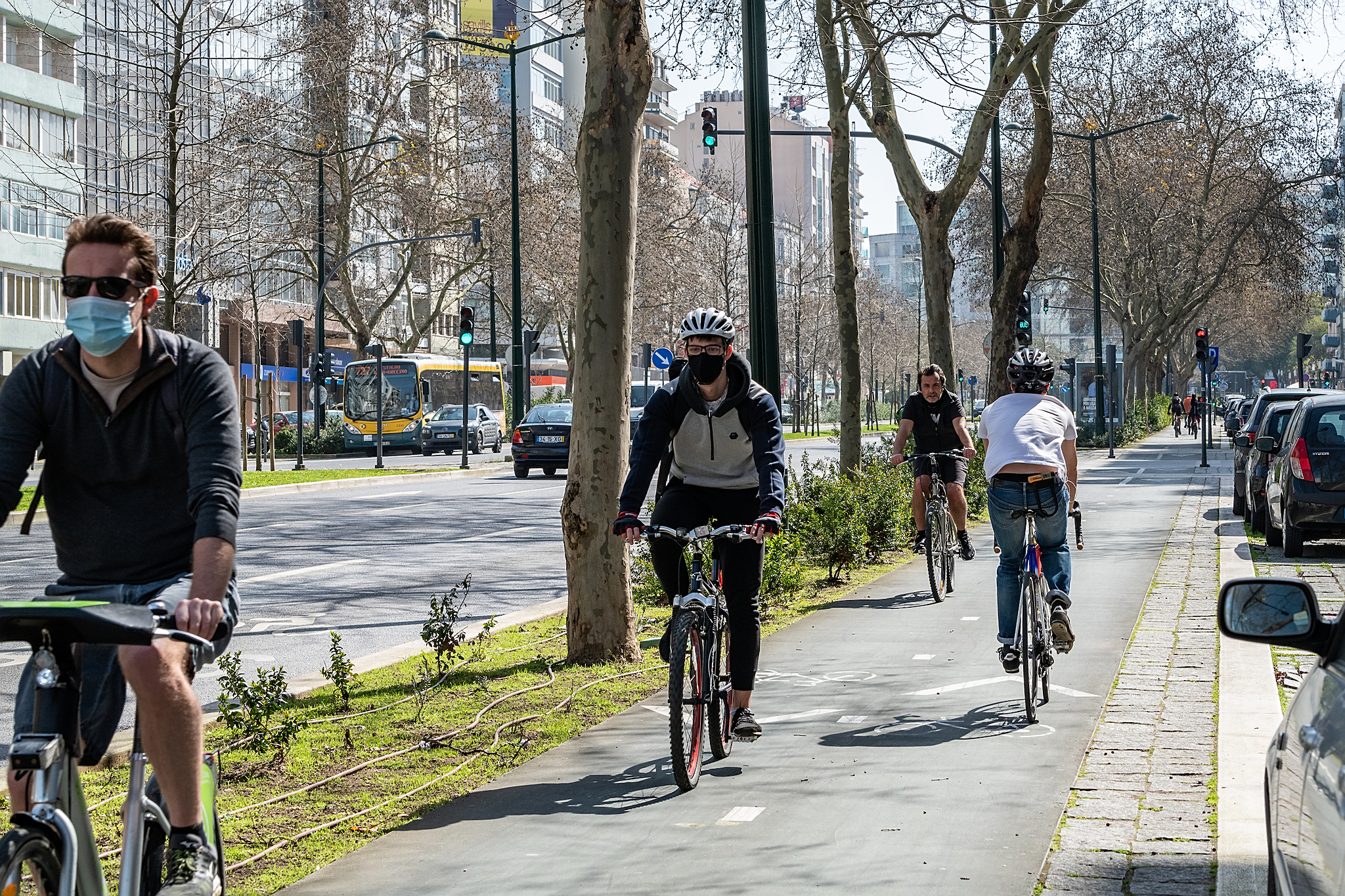
This data is in MOVE Lisbona document where the local authority details its strategic vision for the city's mobility:
"The Lisbon we want is a city with a neighborhood life, with daily life close by, sheltered from heavy traffic, where people prefer to walk, cycle or take neighborhood buses. To achieve this, pedestrian barriers will be diluted, routes will become comfortable and accessible, and traffic will circulate more calmly, coexisting in a friendly way with pedestrians and bicycles for the safety of all. The streets will be meeting and enjoyment areas where inhabitants and visitors will meet and exchange experiences, where commerce and culture will set the pace, where children can play and the elderly can socialize."
- MOVE Lisboa 2030
Data from the mobility survey conducted by the National Statistics Institute (INE) show that nearly 60% of the trips in the Lisbon Metropolitan Area are made by car. The Institute of Mobility and Transport (IMT) says, for its part, that more than 500,000 cars daily, 370,000 of which come from outside the city. It is these values that the municipality is trying to reduce, with the creation of parking lots at the city's doorstep, better public transportation network and new mobility options within Lisbon, with the widening of sidewalks and the construction of bike lanes.
What are the advantages of bicycling in Lisbon?
Known as the city of the seven hillsLisbon has these high points in a very restricted area of its urban network that does not represent the most populated parishes. All of Avenidas Novas, Alvalade, a good part of Areeiro and Arroios, Lumiar and Benfica are located on a plateau; also the river front, from Parque das Nações to Belém, passing through Alcântara, is relatively flat. The truth is that 73% of Lisbon's streets are flat or have slopes of less than 5%, which makes them accessible to most bicycle users. Still, electric bicycles - which have become more affordable and can be subsidized by both the municipality and the government - give a helping hand on the climbs, reducing the physical effort.
The bicycle can be very competitive in the city, allowing you to reach your destination in a short period of time. Figures from IMob2017, INE's mobility reportindicate that 68% of the trips made in the city are in distances less than five kilometers and that about half of these (31.8%) are done with the car. Although the car gives the illusion of speed, in rush hour the average speed is 12-14 km/h, according to information advanced by the autarchy.
In addition to efficiency, the bicycle still:
- contributes to the economy;
- is good for the health of those who use it e who does not use it;
- relieves congestion and increases traffic fluidity;
- is good for business.
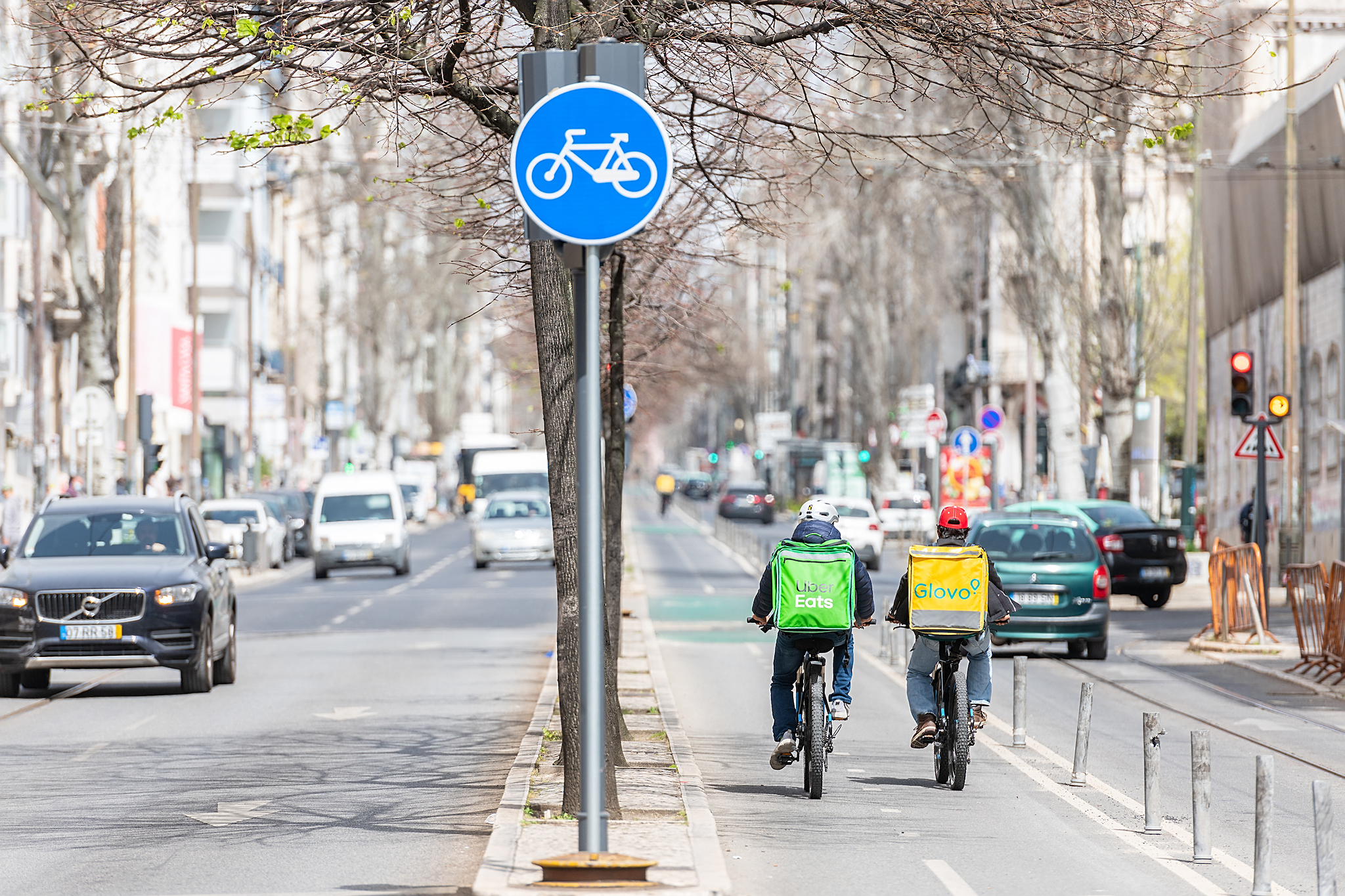
In order for people to actually choose the bicycle over the car, it is critical that the urban space is inclusive enough to allow that choice. Ultimately, the city must put the options on the table and let people choose, rather than pre-limiting that decision with infrastructure that will bias in favor of the car. A Lisbon that has bike lanes on the main avenues and inner streets where speed is reduced to 30 km/h is a Lisbon that can counter the dominance of the car and offer a safe coexistence between all people and their means of transportation.
Are all bike paths the same?
No. Transforming Lisbon into a cyclable city will not always imply creating bike lanes. Bicycle infrastructure can involve sharing space between different vehicles. We explain better:
- segregated bike lanes serve to connect different neighborhoods. Here we are talking about bidirectional (with two traffic directions) or unidirectional (with one direction) bike paths, which offer bicycle users their own, safe channels just for themselves;
- non-segregated infrastructure within neighborhoods. By calming traffic and lowering speeds to 30 km/h (Zone 30), it is possible within neighborhoods to create safe streets where all different modes of transportation can circulate. The City's vision, mirrored in MOVE Lisboa, is to transform all neighborhoods into Zones 30, where bicycles can circulate comfortably and safely without the need for a segregated bike lane;
- sharing areasThese can be coexistence zones (identified with the corresponding sign), cycle path bridges, or routes where bicycles and pedestrians share the same space, and the latter should always have priority.
You can learn more about the cycling infrastructure here.
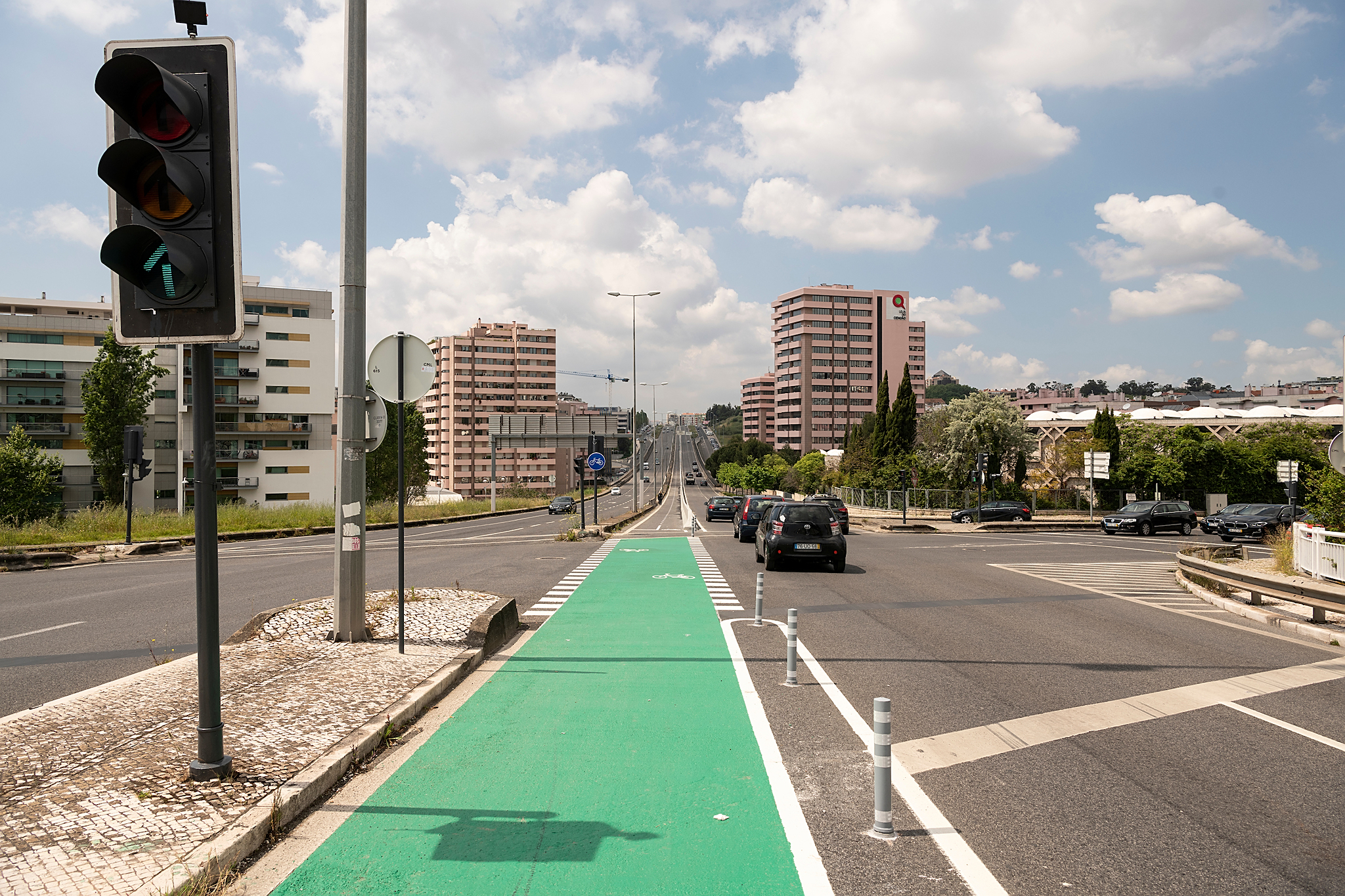
When did you start thinking about bike paths?
The first bike paths in Lisbon were built in 2001 but the first networked ones were planned in 2009 - at the time, a network of a few dozen kilometers of discontinuous stretches and designed mainly for leisure. It was only when the bicycle moved from the Lisbon City Hall's green spaces division to the mobility division that it started to be seen as a utilitarian means of transportation, just like the car, and not as a recreational element.
In 2016, the municipality wrote in its Sustainable Urban Mobility Action Plan the intention to make "the cycling option a real alternative in terms of daily mobility, particularly with regard to commuting home-work and home-school, implementing a cycling network in the urban network that connects to the major trip-generating poles and complements the public transport network".
This document highlighted the intervention on Avenida da República and Avenida Fontes Pereira de Melo, completed in early 2017, which symbolically and practically marked a paradigm shift in the way the city is built. Those two arteries, called "central axis", now have wide and comfortable sidewalks, new rest areas, more green mass and segregated and signalized bike lanes along the entire route. The main victim was the automobile, which lost circulation and parking space, although not in the quantity initially projected due to compromises that had to be made with residents and merchants.
Since the "central axis" that bike paths in Lisbon started to be designed and built with the same principles: green color, straight and without unnecessary curves, pedestrian crossings, traffic lights whenever necessary, and painting of the crossing points with cars. The municipality's plan is public and available onlineThis means creating a cycling network of at least 200 kilometers covering almost the entire city, crossing what are the main road axes and which will also become important cycling links.
What is the plan, anyway?
That Lisbon will have 200 kilometers of bicycle paths should not be news; the intention has been announced several times and is inscribed in the government program of the city for the current 2017-2021 term. On the map published onlineit is possible to see where this cycling network should go and where it is already done. But from paper to practice, the process is still long and a bicycle path planned one way may end up with another configuration or even in another location - it is necessary to create the project, evaluating what kind of infrastructure can be created in each location and making compromises in some cases; then a public tender may be needed and, finally, launching the construction work, which may take several months to be completed. In between, there may be petitions and contestation - This phenomenon is not exclusive to Lisbon.
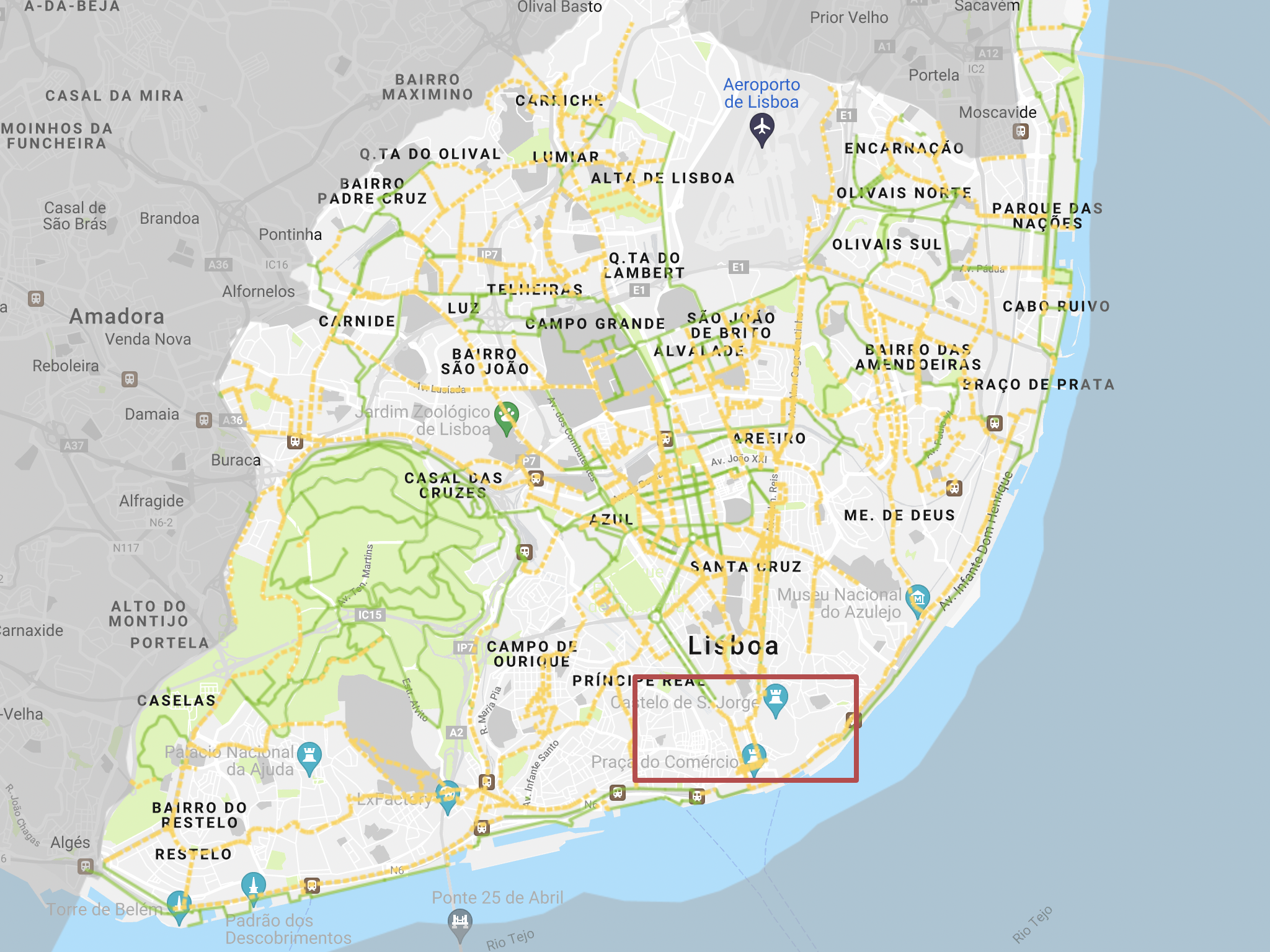
By the end of 2020 Lisbon had about 125 kilometers of bike lanes, an increase of about 20 kilometers over the previous year. Part of these kilometers are in Zones 30, where the reduced speed to 30 km/h allows bicycles and other road users to live together; these zones are marked by painting a green stripe and a bicycle symbol on the asphalt. But Lisbon already has a number of segregated routes connecting different parts of the city - the city's bicycle map is getting closer and closer to a safe, complete and diverse network for all ages.
The ongoing, planned or executive cycling projects are available on this page of the municipalityThis was an exercise in transparency on the part of the local authority - which resulted from widespread pressure from the opposition, in town hall meetings and sessions of the Municipal Assembly, to make available the plans and layouts of the new interventions.
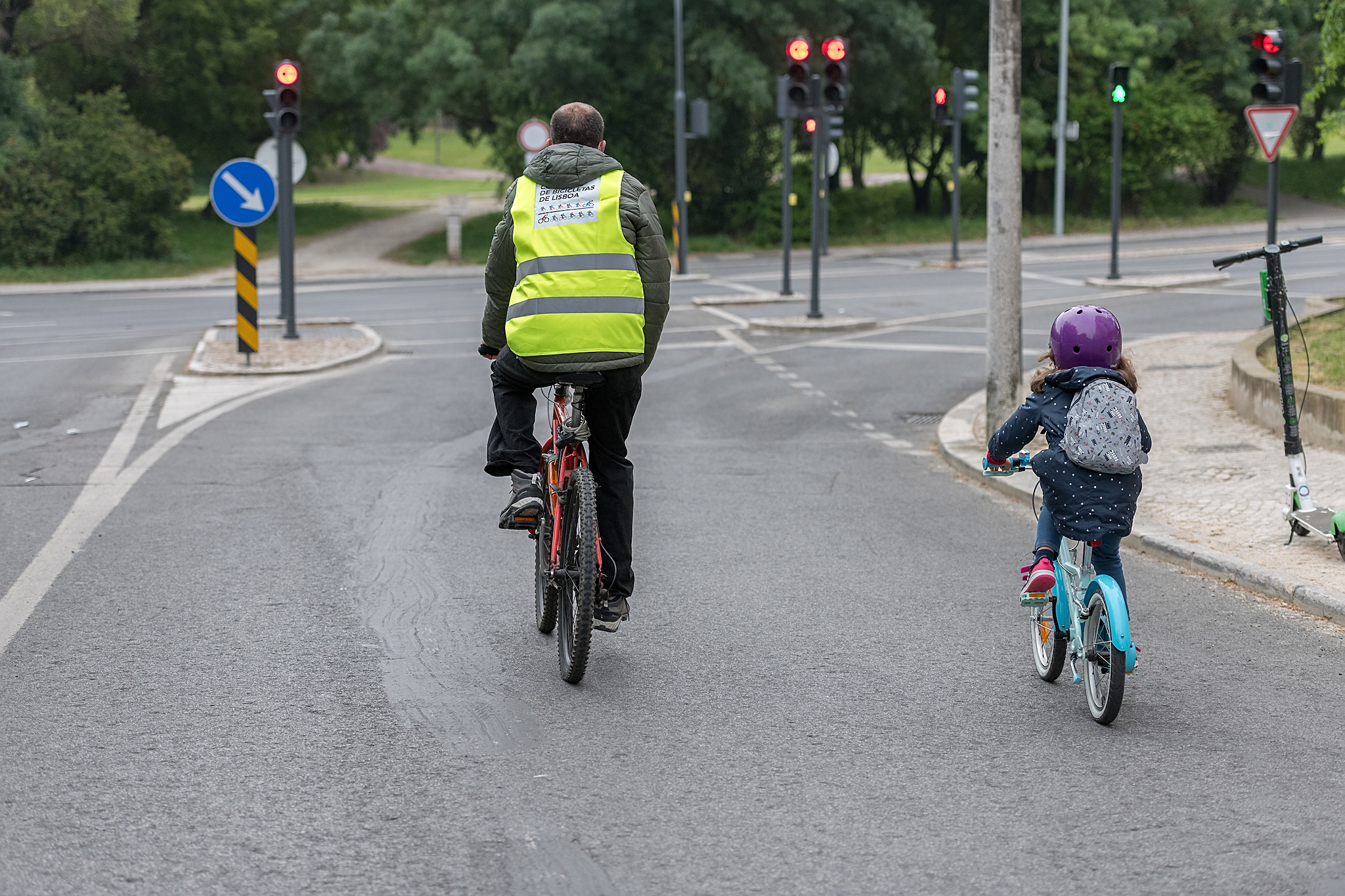
What are bicycle paths pop-up?
In June of last yearIn the context of the pandemic, the City of Lisbon reinforced this goal with the announcement of a series of connections initially planned in pop-up. This pop-up methodology was then beginning to be used in several European cities as a quick and low-cost way to increase cycling and pedestrian space - the goal was very simple: provide greater social distance and offer alternatives to public transport and the car, in order to avoid large concentrations of people and congestion.
Philosophy pop-up has been followed in some of the announced interventions being executed in the city of Lisbon, allowing the City Council to accelerate the 200 kilometer plan with the construction of new connections without major works. The first pop-up bicycle path was realized on Castilho Street and Avenida Marquês da Fronteira, with paint and bollards, followed by other interventions around the city during the summer of last year, such as the controversial Avenida Almirante de Reis.
These pop-up bike paths have the advantage that they can be easily installed and changed until a definitive route is found. This is the case of Almirante Reis, where the installed bidirectional bike lane is giving way to two unidirectionalWith the new typology, there will be enough space for two cars to cross in case of need, solving one of the main criticisms of the current design. A bike lane in Olivais, more specifically on Rua Cidade de Bissau, was also reconfigured from a one-way to a two-way modelThis is allegedly the result of pressure from residents and the Parish Council.
Which important axes are under construction? And which are missing?
A Avenue of Bern, a Alameda das Linhas de Torres, a Afonso Costa Avenue and the reconfiguration of Almirante de Reis Avenue will be the main additions to the cycling map in the near future. For this balance, we must also count other important connections in the works: the Prof. Lima Basto Street and the Conde de Almoster Streetthat will allow a fluid connection between Benfica and the city center; the Prof. Fernando da Fonseca Streetwhich will complement the bike path of the Lines of Torres; the south side of Alameda dos Oceanoswhich, together with the recent bike path on Avenida Marechal Gomes da Costa, will make it easy to get from Alvalade to the river; and the Avenida Marechal Teixeira Rebelowhich will extend the bike lane from Avenida Lusíada to Carnide and Telheiras. All told, it will be almost 20 new kilometers dedicated to bicycles, in a city that has about 125 km of cycling network and more than 1700 kilometers of road network.
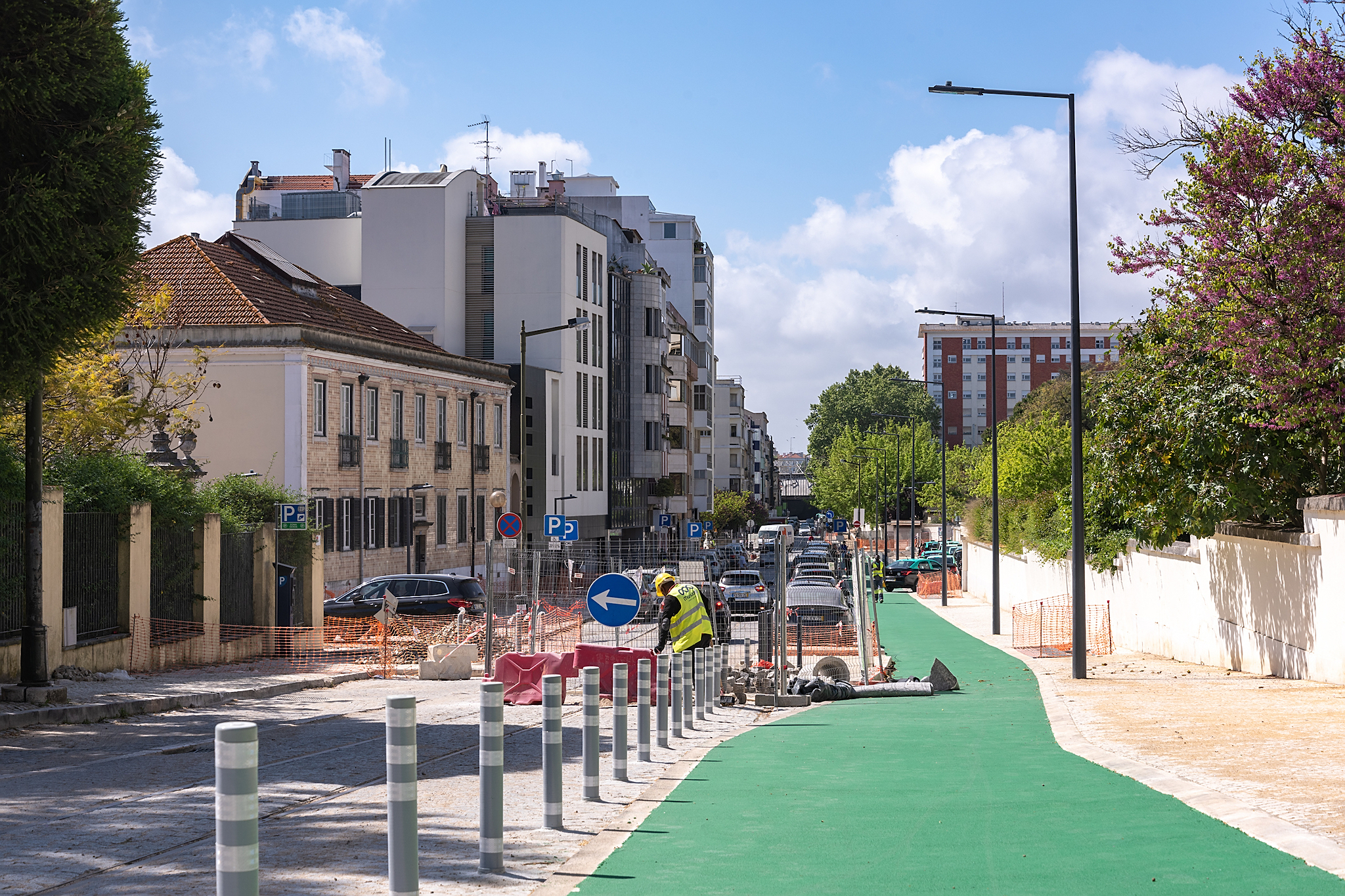
In essence, bicycles also need direct routes between the destinations they serve, connecting residential areas, work areas, recreational spots, schools, and services. Just like the road network, the cycling network will also be composed of main, secondary and complementary axes; if the first ones should be the most sought after, the others will work as alternatives or traffic distributors. For example, from the Avenida da República bike path, which integrates one of the seven main axes, it is possible to enter the Avenidas Novas neighborhood through Avenida Defensores de Chaves, reaching schools or services that are located in that area.
To make the future network as understandable as possible, the municipality has developed a map that, using a subway-like scheme, simplifies the cycling connections into seven major axes:
- the Central Axis, between Ameixoeira and Terreiro do Paço;
- the Alcântara-Pontinha axis;
- the Eixo Panorâmico, between Benfica and Braço de Prata;
- the Marginal Axis, between Monsanto/Algés and the Trancão River;
- the Downtown-Airport Axis;
- the Olivais-Beato axis;
- the Exterior Circular Axis, between the Camping Park and the Oriente.

What's next? According to the bicycle paths plan pop-up announced in June 2020These are some of the next links in which the local authority will have to intervene:
- Avenida da Liberdade - Two one-way bike lanes, one on each side, with reversed traffic directions, similar to what was also announced in the ZER ABC plan;
- Uruguay Avenue - to quickly connect Benfica to Telheiras through the already existing bicycle path on Avenida Cidade de Praga, and also Benfica to the rest of the city through Avenida Lusíada;
- Avenue of Rome - an important residential and service axis, and one of the most awaited cycling connections;
- Avenida de Ceuta - will connect Campolide to Alcântara through the Alcântara Valley Green Corridor, under construction since 2016;
- Avenida José Malhoa - an important axis in Sete Rios;
- Avenida Gago Coutinho - one of the most important and long-awaited connections, allowing Areeiro and Alvalade to be quickly connected to the airport or to the river via Olivais;
- Restelo Avenue, Avenida das Descobertas e Avenida Torre de Belém - to create a stronger and more utilitarian cycling network in Bethlehem;
- Álvaro Pais Avenue - connecting the Cidade Universitária and Rego areas to Avenida 5 de Outubro;
- Avenida Carlos Paredes e Helena Vieira da Silva Avenue - to strengthen the cycling network in Lumiar, connecting schools and residential areas, and connecting Lumiar to Alta de Lisboa.
What about the studies? Cyclists in the city increased 25% in one year
Every year since 2017, the Lisbon City Council and researchers from the Instituto Superior Técnico (IST) have collaborated to conduct counts of the number of bicycle users in different parts of the city. A report is produced which summarizes these values and also some trends regarding user behavior that only human observation can identify. The document for the year 2020 was based on observations 66 observation points and includes the following conclusions:
- Bicycle use grew 25% between 2019 and 2020globally in the city, at the counting points;
- The volume of cyclists on Av. Almirante Reis increased 140% after the introduction of the bicycle path pop-up;
- More women are riding bicycles - today, with an overall ratio of 26%;
- More cyclists are using their own bicycle (+8% than the previous year);
- The proportion of electric bicycles increased from 5% (2018) to 17.5% (2020) of private bicycles;
- About 5% of the cyclists are relay riders, more than doubling from the previous year;
- Helmet use increased from May to October, "potentially revealing the emergence of more less experienced cyclists looking to protect themselves with a helmet". In May 2020, cyclists riding without helmets accounted for about two-thirds of the total.
- "In general, it was found that cyclists practically do not circulate on the sidewalk when in the presence of a bike lane."
- "From 2017 to 2019, the proportion of bicycles with child seats or trailers more than doubled from 2.7% to the current 6.2%. (...) However, in October, the use of chairs or trailers decreased, accounting for 3% of total riders. Even adding cargo bikes, to be comparable with previous years, child seat use accounts for 4%."
- There were 40 cyclists per hour passing on Alameda das Linhas de Torres, a figure that grew 19% over the previous year and 193% over 2017.
The IST researchers also conclude that "The creation of adequate and continuous cycling infrastructure has an attraction effect on the increase of cyclists. On the other hand, the creation of cycling infrastructure not integrated into coherent and continuous corridors does not show positive effects on the increase of cyclists"..
Another study, which results from a survey promoted by the municipality in several schools in the city, shows that more students are going to school by bicycle. Although the car is still predominant, the percentage of students who say they go to school by bike has increased from 1.0% to 1.5% in one year - an increase of 50%. Bicycle Trains can contribute to the increase in the modal split of the bicycle in the school environment in the coming years; today more than a hundred students have already joined the Train program, which covers seven schools in the city.
What about GIRA, the bike sharing system?
The desire to launch a public bike sharing system in Lisbon goes back since at least 2010with the idea of making 2,500 bicycles available in the city. However, it was only in 2017 that this system became a reality - GIRA, as it was named, went through a test period in Parque das Nações before becoming something "for real" and operating in various parts of the city. Today, GIRA has 84 stations and about 600 bicycles in circulation - numbers far from the initial plan of the 1st phase of GIRA, which should have been completed three years ago and foresaw 140 stations and 1410 bicycles, of which 970 would be electric.
Only GIRA has gone through some setbacks, both on EMEL's side and that of the supplier Órbita, who went bankrupt, but the system should see more encouraging days this year. EMEL, which is now taking over the entire management of the project, is receiving and placing on the street 730 new bicycles (all electric) from the MEO/Soltráfego consortium, the result of a first public tender. Another public tender is underway for the supply of another 1500 to 2000 bicycles (also electric only). In parallel, EMEL plans to install 80 new GIRA stations this year to cover new areas of the city; some of these stations will be installed along Almirante Reis, but also in Lumiar and Olivais.
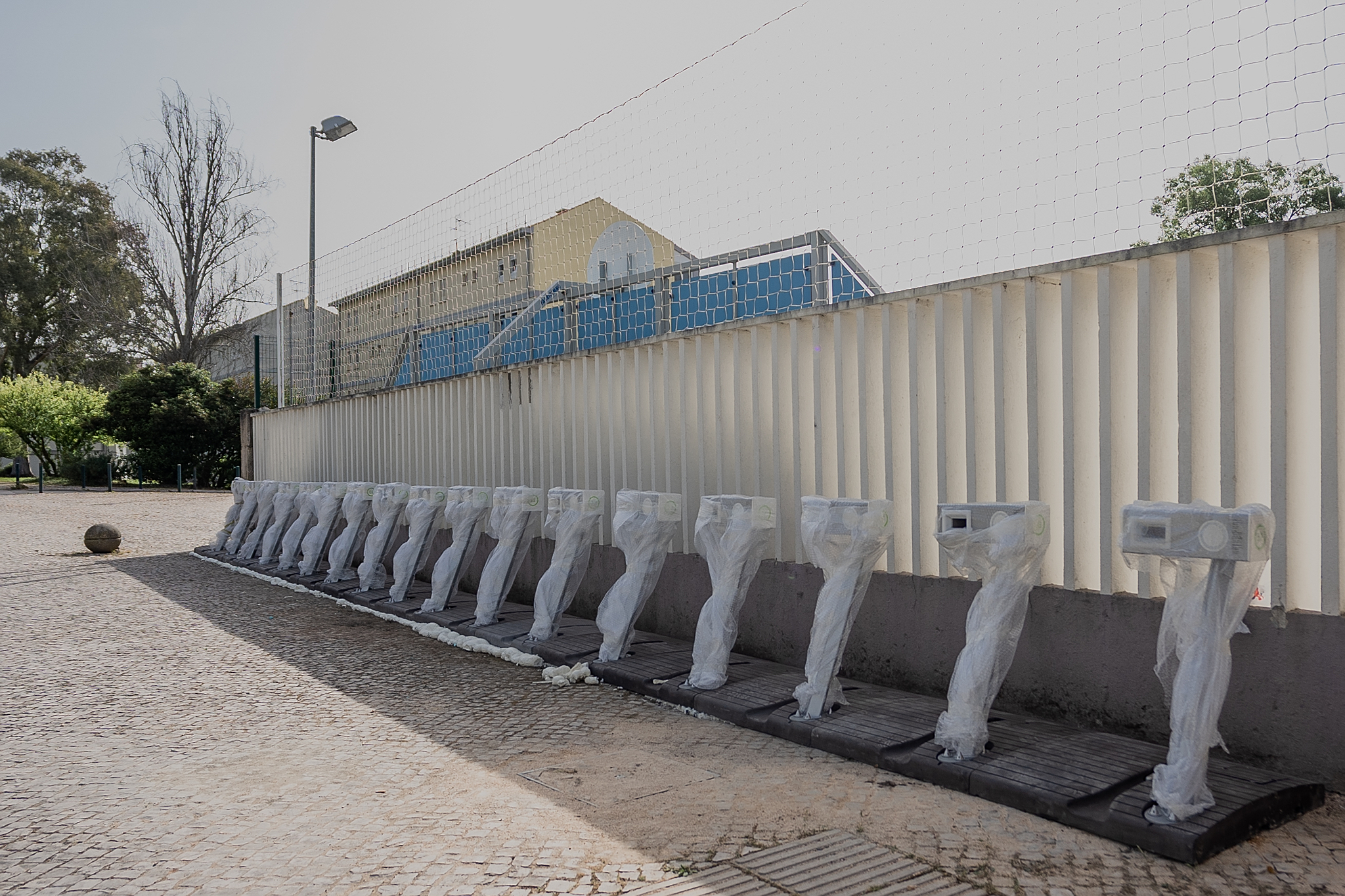
All in all, if everything goes as planned, GIRA will reach more areas of the city this year and will have about 160 stations and 3000 bicycles. A study by Instituto Superior Técnico for EMEL indicated a "GIRA have rolled in over 3.6 million trips and are estimated to have delivered GHG [greenhouse gas] emissions savings to the environment of over 300 tons of CO2eq [carbon intensity].". On the other hand, the installation of GIRA stations combined with the creation of cycling infrastructure can be a combo perfect for "leverage utilization" of this infrastructure, "contributing to the increase in the number of cyclists"as the IST researchers write.
What is left to do?
Lisbon is transforming and one day, maybe, we will stop questioning bike lanes because they will be an integral part of the urban landscape - just like every street has sidewalks, you can expect every street to have some kind of cycling infrastructure. This is, for example, the plan with which the Mayor of Paris, Anne Hidalgo, ran again and won the election in 2020.
The Portuguese capital still has, however, a long way to go. Missing:
- complete the planned network of bicycle paths to create the network effect, solving some loose ends that exist today and enabling uninterrupted travel;
- review old bike paths to resolve conflicts with pedestrians, improve road safety, and encourage more direct connections, thus bringing old bike lanes closer to the standards of the new ones;
- standardize signage of bike paths to make them more noticeable to their users and to other people using the public space, by revising the color or marking, for example, crossings with cars;
- strengthen the GIRA network with more bicycles and more stations, covering the entire city. The expectation now is for the two public tenders mentioned above;
- bet on secure parkingsolving one of the obstacles to bicycle adoption. Besides free and free surface parking, the local authority and EMEL provide covered parking with restricted access - two bicycle parks are currently in operation, one in Entrecampos and the other in Mouzinho da Silveira, and are being created parking lots in 13 EMEL underground parking lots;
- cyclist countersThis makes the data more accessible and visible in the city. There has been a meter installed on Duque d'Ávila for several years, whose information is accessible here. But the City Council wants to introduce more meters throughout the city and, through EMEL, has a public tender underway to purchase 34 sensors for monitoring bike lanes and two screens to display information in real time.

